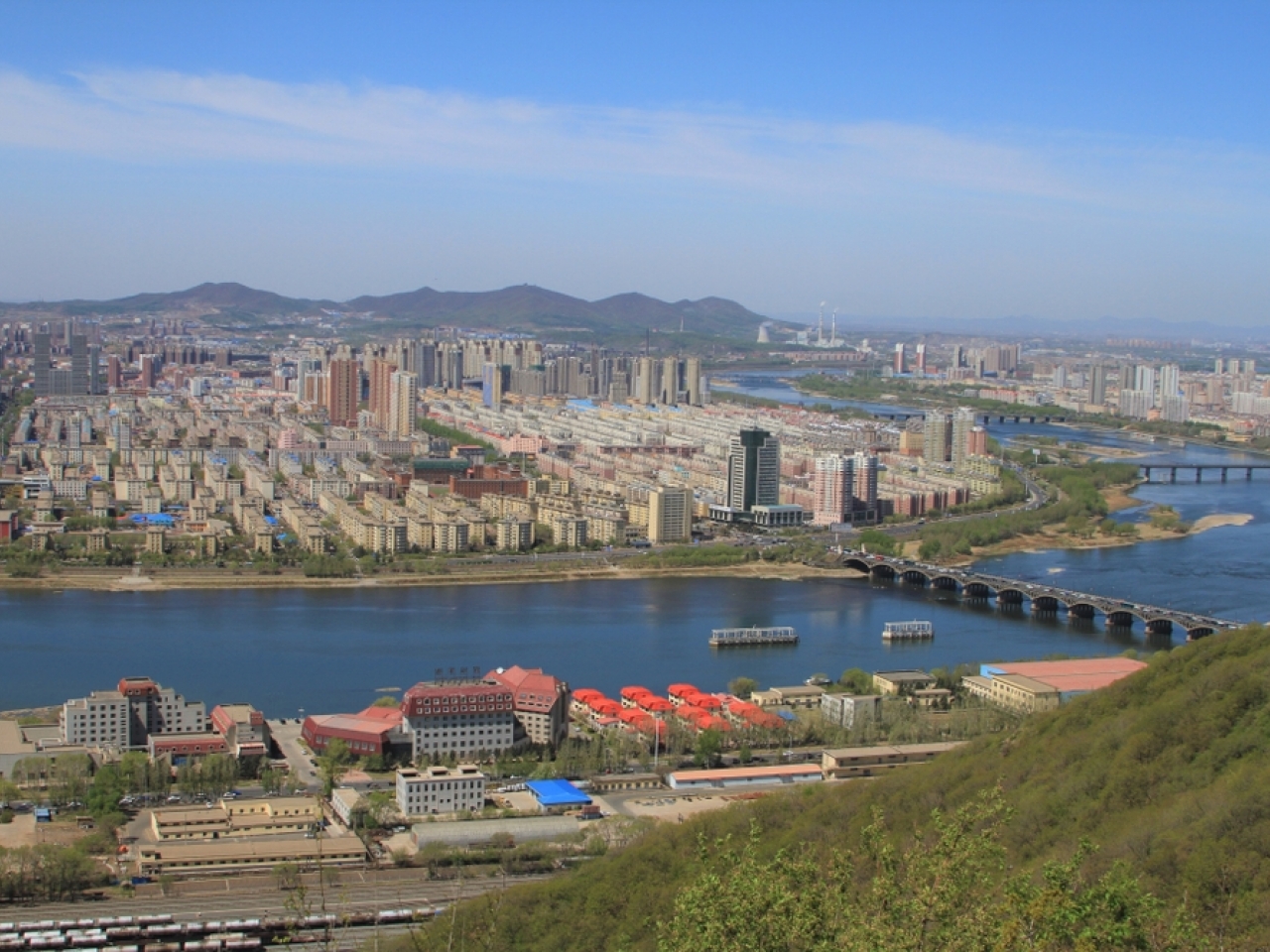
Jilin, China, under lockdown after new cases.
More than six months since the World Health Organisation declared a global health emergency, and the coronavirus epidemic, a pandemic, scientists still do not know all they would like, about the virus. What most of them know for certain, is that there will be a second wave. But what is this second wave, and is it inevitable?
Transmission chains, flattening the curve, isolation, quarantine, physical distancing, the 2020 lexicon, to which we must now add second wave, cluster, spike, the R0 number, in our day to day conversations.
A study of past epidemics show that second waves are almost always inevitable. The World Health Organisation (WHO) has warned that Covid-19 is “here to stay” the universally unwanted guest, yet one whose travel plans, populations across the globe continue to facilitate. For Dr Andrea Ammon, Director of the European Centre for Disease control and Prevention, it is no longer a matter of if, the second wave will hit, but when.
While Covid-19 still holds many mysteries, including a cure or vaccine against it, the world knows what needs to be done, if a second wave is to be avoided. It is now a matter of the political will to enforce measures that will protect us all from a resurgence. The pattern could not be simpler. SARS-COV-2 to give Covid-19 its scientific label, is a virulent virus which needs people to come into close contact with each other.
With lockdown, physical distancing, and all the other measures to prevent the virus from reproducing itself, the infection rates across the world fell, in some places like China, they fell down to zero a day.
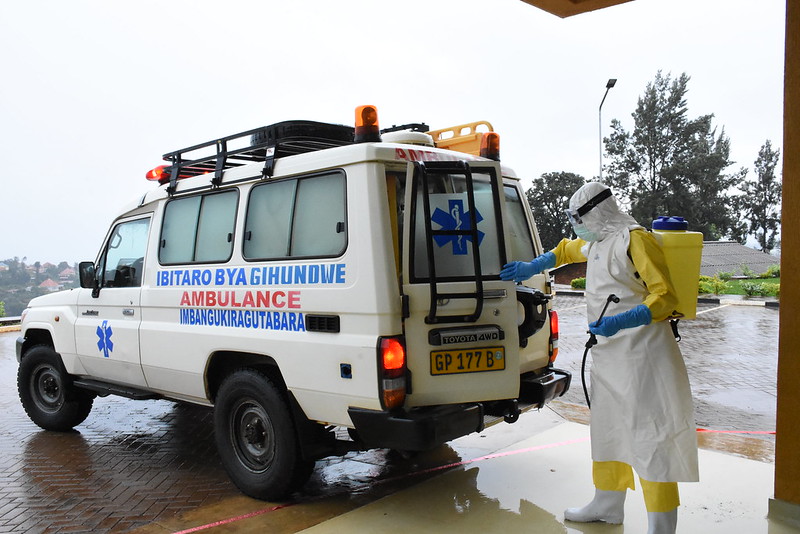
As these measures become relaxed, largely because of the pressure to kick start economies, but also because people are simply fatigued from not doing the everyday things, they normally take for granted, they again come into close contact with each other, and the infection spreads.
In Rwanda, the cautionary tale is Rusizi district, in the country’s Western Province. Only a few weeks ago, thanks to the measures the government took, beginning as long ago as January, the country was regularly reporting zero infection rates, and no deaths. Virtually all the new cases were imported, there were no local transmissions, a relief, given the implications of community transmission.
Lockdown measures, including restricting non essential movement between the regions, were working as intended, well enough for authorities to begin relaxing these measures. A return to some kind of normality begun to look possible.
Suddenly, the daily reports of cases from the health ministry, went from 1, or sometimes zero, a day, to more 10, on some days. The first death was announced, a 65-year-old truck driver, who had returned from across the border in Tanzania. Doctors could not save him. He had most likely left it too late to seek treatment.

His death was quickly followed by that of twenty-four-year-old Police Office on June 2, at the beginning of a burgeoning career, she had been on a peacekeeping mission in Malakal, South Sudan.
Rwanda was experiencing a spike, as a result of a cluster of cases in a part of the country. The response would determine whether or not there might be the dreaded second wave.
Crucially, as they have done from the first onset of Covide-19, the authorities followed scientific advice, to the letter. While they allowed the relaxation in the rest of the country to continue, the Western Province was immediately put back into lockdown. The wisdom of restricting movement between different regions suddenly became apparent.
The Western Province “cluster” of cases, is instructive in several ways. Up until then, Rwanda was containing a “spike” in cases brought into the country by transregional truck drivers. The Western Province cases are almost certainly, as a result of cross border infection.
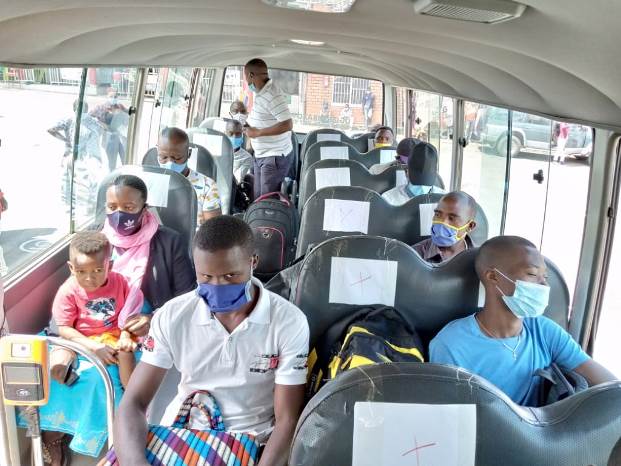
There are screening procedures along all border points, but in mindless support for Covid-19, a number of people contrive to avoid these by using illegal border crossings.
It is a reminder that in a pandemic, the world’s nations, especially neighbouring countries, need to support each other, and no government, however efficient can do it alone. Preventing community transmission has to be a national effort. The best work of innumerable experts can be undone by a few irresponsible individuals.
The Rusizi cases are being contained through isolation, testing and tracing of all who have been in contact with the infected people.
But it can take only one or two people to raise the rate of infection, the so-called R0 (R nought) number, the average rate at which an infected person will infect others.
Keeping the R0 at less than 1, means that the disease will decline, and hopefully eventually die out. At more than one, and the infection rate increases exponentially.
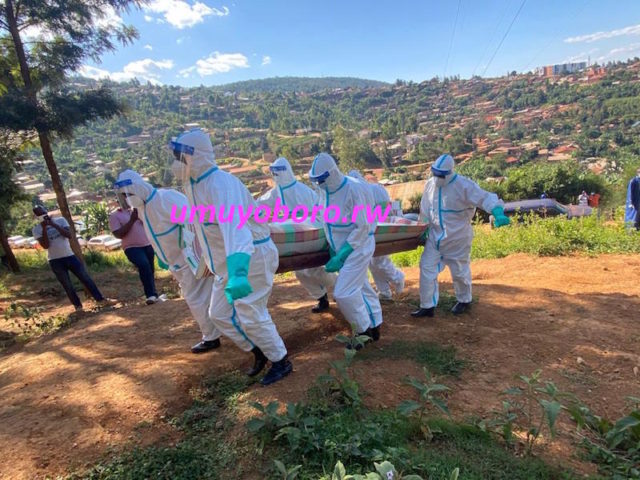
Burrial of the first COVID-19 victim in Rwanda. Photo Umuyoboro.rw
Under lockdown, isolation, physical distancing, countries are managing to keep the R0 rate at below 1. At the height of the pandemic, before these measures were universally applied, the R0 rate was calculated at between 3 and 4.
Rwanda has not been alone in getting a glimpse of what the second wave might look like. Japan’s Hokkaido island was one of the country’s worst-affected regions. With a strict state of emergency and stringent measures in place, Hokkaido achieved a dramatic reduction in infections. Schools were reopened and people went back to work.
This decision had to be reversed suddenly, with a spike in cases. The action produced the desired results, and measures were relaxed once again, but officials expect they may have to reverse that decision again. South Korea had a similar experience.
China was of course, the first part of the world to be hit by Covi-19, and International markets were closely watching the country for signs of the second wave.
There are sighs of relief all around, that no second wave has emerged there.
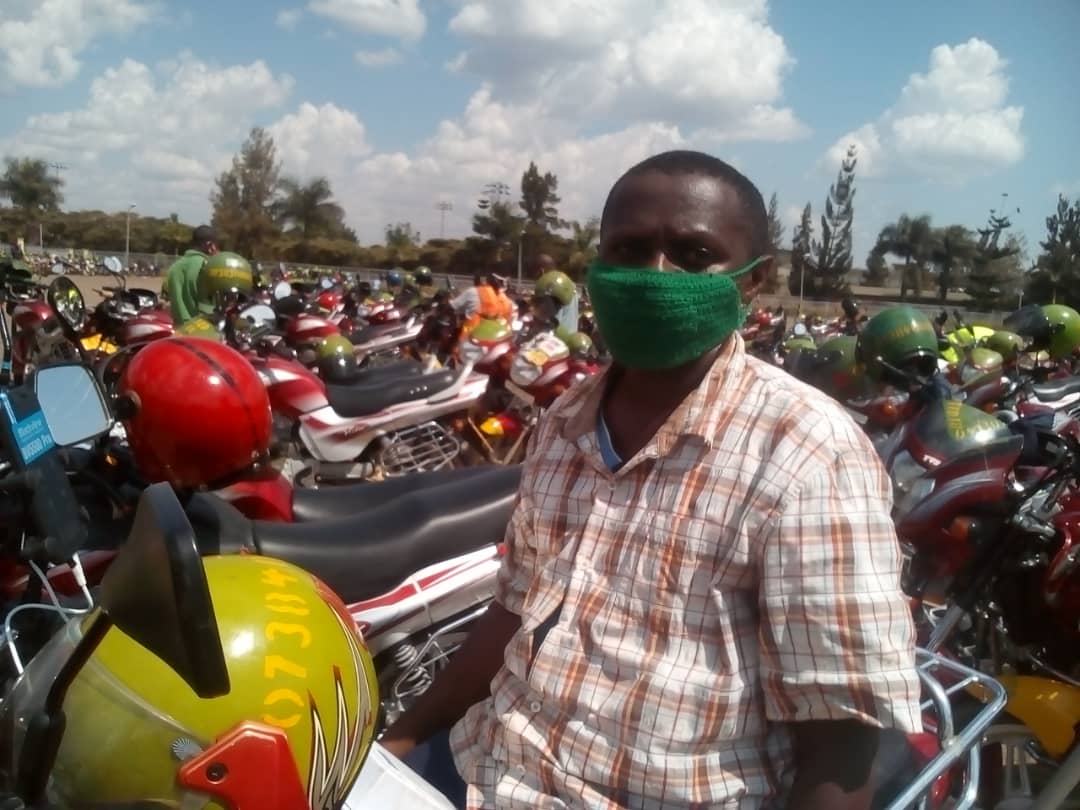
But it is dangerous to cherry-pick only parts of the Chinese experience. From the moment China first learnt of the emergence of Covid-19, the government took an uncompromising attitude to fighting the disease.
The only consideration that mattered, was what needed to be done to contain the spread of the virus. This approach has remained in place, and has informed the response to any sign of a possible second wave.
Thanks to the tough application of prevention measures, China was first to relax them, with the country returning close to normal. That is until a cluster of cases was noticed in Shulan, north eastern province of Jilin. Like Wuhan, which was the epicentre of the virus, Jilin is a manufacturing hub, and as such important to the kickstarting of the economy.
But no sooner than the first cases were reported, than factories fell silent, as stringent lockdown measures were put into place. There was no agonising over what it might mean for the economy.
Paradoxically, this people first, economy later approach, has allowed China to restart economic activity sooner than most countries who try to balance keeping the economy active and containing the virus.
As in the Rwandan case, the Shulan, Jilin cases are almost certainly from the neighbouring country, in China’s case, Russia.
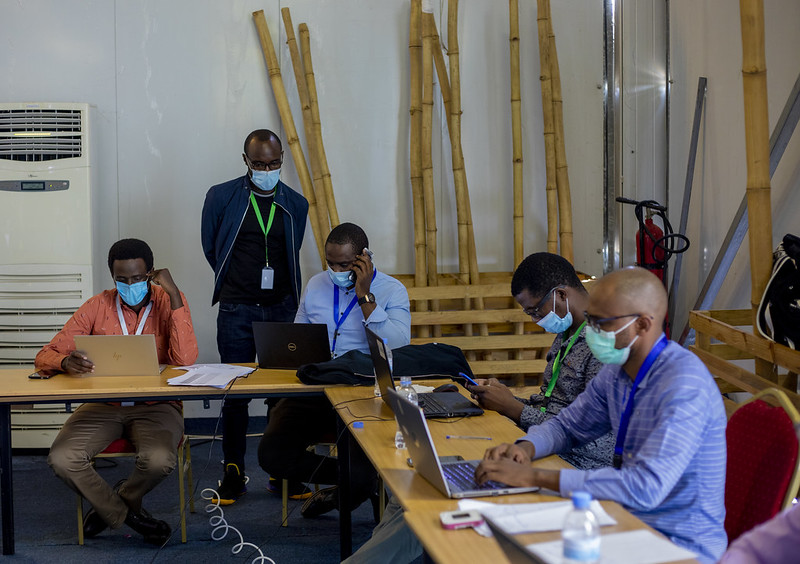
COVID-19 joint task force
And when six cases or so were detected in Wuhan, the response was to lockdown the area. And in what was the “ten-day war” against the virus, officials were given ten days to prepare to test all 11 million of the city’s inhabitants.
In some ways, China was prepared for a resurgence of the virus, long before we heard of the second wave. Not even with zero new local cases, when all cases were coming from outside the country, were they ever tempted to let their guard down. Constant vigilance became and remains the norm.
Officials from the centre for disease control, speak matter of factly, about the inevitability of a second wave, and the need to prepare for it.
It is precise because of this level of vigilance and readiness to sacrifice economic gains to defeat the virus, that China is least likely to suffer a second wave.
Without following the Chinese example, exactly, without making the sacrifices they have been prepared to make to defeat Covid-19, it may be a fatal miscalculation to conclude that a second wave is unlikely, because it has not emerged in China.

